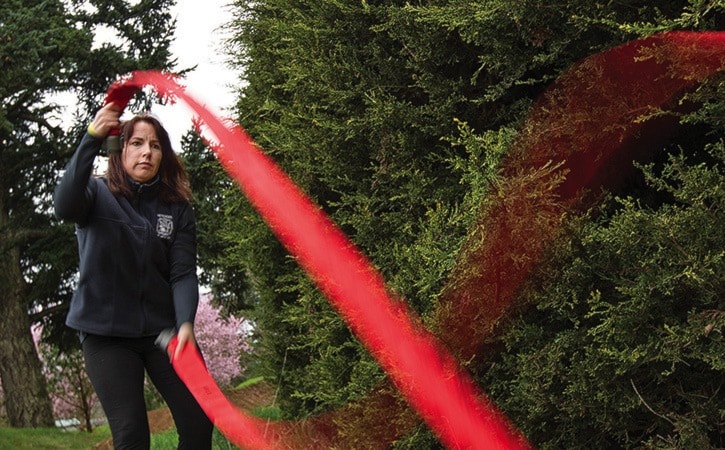Metchosin’s fire hall is undergoing a transformation.
The longstanding hall isn’t being renovated and there are no immediate plans for any upgrades, but many of the nearly 40 volunteer firefighters and staff manning the hall are undergoing changes to themselves. A new fire fitness program aimed at increasing the overall health of its membership has been embraced by the Metchosin Fire Department.
“(Some fire halls) have reduced sick time drastically because of this,” says Fire Chief Stephanie Dunlop.
“It’s been a great change and (we’ve seen) great buy-in from everyone. I now get to the gym every single day; before, it wasn’t a priority for me.”
Dunlop says one of the most common causes of firefighter death is heart attack on a fire scene, an issue exacerbated for the non-career members volunteering at hundreds of departments around Canada and the U.S.
That concern has seen the Metchosin department work closely with WorkSafeBC, while encouraging firefighters to improve physical fitness.
The fire hall gym has been made larger, with cardio equipment added and trainer Monica Elliot brought in to design a workout circuit for the volunteers.
 The gym has gone from being “a little hole in the ground” five years ago to one that makes it easier for firefighters to work out, she says. “The idea is that people are getting healthier, so we lower our risk of a medical condition happening on a fire scene. It’s about keeping them healthy and increasing morale and camaraderie.”
The gym has gone from being “a little hole in the ground” five years ago to one that makes it easier for firefighters to work out, she says. “The idea is that people are getting healthier, so we lower our risk of a medical condition happening on a fire scene. It’s about keeping them healthy and increasing morale and camaraderie.”
Dunlop says the program has rolled in nicely with the hall’s weekly dinner, where firefighters rotate cooking duties to make dinner for the rest of the members.
Slowly, healthier food options are overtaking less healthy ones, the benefits of which are far reaching, says volunteer firefighter Jason Humphries.
“We have a physical job at the best of times, and this (program) is showing we care about the membership and want everyone to be as healthy as (possible),” he says. “We spend a lot of time practicing for medical calls and house fires and accidents, but we don’t spend a lot of time promoting well-being amongst ourselves – this is one of the steps we are trying.”
Firefighters choose their own level of involvement in the program, which culminates every Sunday evening with a purpose-built class that uses training guidelines from the National Fire Protection Association. Exercises include advancing with charged fire lines, hitting a weighted sled with a rubberized sledge hammer, dragging life-like dummies and doing balance work.
“We are taking care of ourselves so we can take care of (the community) and that is great,” Humphries says. “We take pride in what we do and we try to embrace the community.”
Demonstrating that commitment to the residents helps instil faith in the fire protection service, he adds. “Two to three years down the road, I hope it is a program that can continue.”
Dunlop agrees, saying her job is to look out for her firefighters – if any of them looks queasy or she has other concerns for their safety, she pulls them out of a situation. She sees this as preventative maintenance for her firefighters and the community.
“If I have a guy that is out of shape and torques his back or pulls a muscle, he is no use … he’s out of commission until he is better,” the chief says.
“If he can have preventative maintenance to be in good shape … In the long run it is safer for our citizens.”
